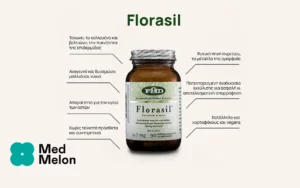Scientific Names of Winter Savory: Satureja montana L. [Fam. Lamiaceae]
Forms:
Winter savory leaf tea; Alcohol and aqueous extracts of winter savory
Traditional Usage:
– AIDS
– Amenorrhea
– Antibacterial
– Antifungal
– Antiretroviral
– Antiseptic (externally)
– Antispasmodic
– Antiviral
– Aphrodisiac
– Breathing Disorders
– Bronchitis
– Carminative
– Cough
– Cold
– Colic
– Cramps (Digestive)
– Diarrhea
– Digestive Disorders
– Dysentry
– Dyspepsia
– Flatulence
– Gastrointestinal Disorders
– HIV
– Intestinal Antiseptic
– Menstrual Disorders
– Poultice
– Stomachaches
– Vascular Disorders
Overview:
Winter savory, Satureja montana L. [Fam. Lamiaceae], is a popular culinary herb used around the world, often used by Europeans in bean dishes to prevent gas. Savory is valued for its aromatic oil similar to other mint family plants including marjoram, oregano, thyme, sage, rosemary, basil, peppermint, spearmint, pennyroyal and lavender. Winter savory tea was traditionally used in Europe as a medicine for alleviating digestive disorders including colic, diarrhea, flatulence and dyspepsia. In European folk tradition, winter savory leaf tea was also used as an antispasmodic for treating menstrual disorders and cramps. Winter savory oil has strong antimicrobial properties against viral, bacterial, fungal and yeast infections and can be used both internally and externally. The aqueous extract of Satureja montana also has documented potent anti-HIV-1 activity (with an ED of 16 microg/ml). The active components in the extract were found to be water-soluble polar substances, not nonpolar compounds such as essential oils. In addition, the aqueous extract inhibited giant cell formation in cells with and without HIV-1 infection and showed inhibitory activity against HIV-1 reverse transcriptase. Ethanolic and aqueous extracts of a related savory, Satureja boliviana, also have antiviral activity against both herpes simplex type I (HSV-1) and stomatitis virus (VSV) and it is likely that S. montana also has these properties. The total extract of flavonoids of Satureja parvifolia was tested and showed antimicrobial activity against Gram positive and Gram negative microorganisms. Experimentally, Satureja obovata Lag., containing eriodictyol (5,7,3′,4′-tetrahydroxyflavanone), acts as a vasodilator and relaxant. A monoterpene found in winter savory oil called geraniol also has been shown to have tremendous activity in combating abnormal growths. Geraniol has specific activity in vivo against abnormal white blood cells. Monoterpenes block cholesterol production within the body, which prevents excess estrogen formation and related stimulation of abnormal cell division.
Active Ingredients:
Winter savory leaves and oil contain: essential oil containing several monoterpenes including geraniol. There are also many tannins, flavonoids and triterpenes in the leaves. Most of the antimicrobial and anti-HIV compounds detected were flavonoids mono and dihydroxylated in B ring. Also, eriodictyol (5,7,3′,4′-tetrahydroxyflavanone). The four known homologues of tocopherol, alpha-, beta-, gamma- and delta-, are also found in the plant but the concentration of the gamma-homologue was significantly higher. Total tocopherol content ranged from 288 ppm to 672 ppm.
Suggested Amount:
Based on Culpeper’s Color Herbal (1983), the famous European herbalist-physician of the seventeenth century, Nicholas Culpeper, recommends that winter savory be taken as a tea with the recommended dosage of a cold or moderately hot cup of tea taken three to five times a day or as required. The infusion of coarsely cut or powdered, dried tops is made using 1oz (28g) of herb material to 1 pint of boiling water (ca. 568 ml). The boiling water is poured over the herb material and extracted for 10 minutes. For poultices and washes, a 5% infusion is recommended.
Drug Interactions:
None known
Contraindications:
None known
Side Effects:
None known
References:
Abad MJ, Bermejo P, Gonzales E, Iglesias I, Irurzun A, Carrasco L. 1999. Antiviral activity of Bolivian plant extracts. Gen Pharmacol. 1999 Apr; 32(4): 499-503.
Crowell PL. 1999. Prevention and therapy of cancer by dietary monoterpenes. J Nutr. 1999 Mar; 129(3): 775S-778S. Review.
Ramon Sanchez de Rojas V, Somoza B, Ortega T, Villar AM, Tejerina T. 1999. Vasodilatory effect in rat aorta of eriodictyol obtained from Satureja obovata. Planta Med. 1999 Apr; 65(3): 234-8.
Slavkovska V, Jancic R, Bojovic S, Milosavljevic S, Djokovic D. 2001. Variability of essential oils of Satureja montana L. and Satureja kitaibelii wierzb. Ex Heuff. from the central part of the balkan peninsula. Phytochemistry. 2001 May;57(1):71-6.
Yamasaki K, Nakano M, Kawahata T, Mori H, Otake T, Ueba N, Oishi I, Inami R, Yamane M, Nakamura M, Murata H, Nakanishi T. 1998. Anti-HIV-1 activity of herbs in Labiatae. Biol Pharm Bull. 1998 Aug;21(8):829-33.




